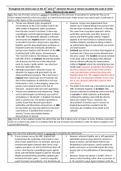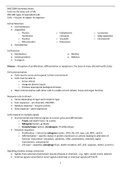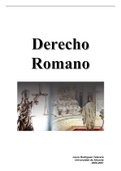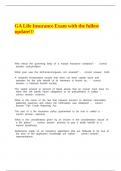Communicatiewetenschap
Inhoud
Hoofdstuk 1: bouwstenen deel 1............................................................................................................5
1.1 inleiding communicatie is meer dan communiceren....................................................................5
1.2 het teken als basis voor betekenisvol communiceren..................................................................6
2. teken; tekensystemen en tekenindelingen.....................................................................................6
Tekensystemen...............................................................................................................................9
Tekenindelingen...........................................................................................................................12
1.3 Elementen van het communicatieproces...................................................................................13
Hoofdstuk 1.4 Communicatiemodellen............................................................................................21
communicatiemodel Lasswell (1948):..........................................................................................21
model van Shannon & weaver (1949):..........................................................................................23
balansmodel (= co-orientatie/ABX model ) van Newcomb:..........................................................24
model van Schramm:....................................................................................................................25
model van Gerbner:......................................................................................................................26
model van Jakobson:....................................................................................................................27
model van Oomkes:......................................................................................................................28
Hoofdstuk 1.5 verschillende visies op het communicatieproces......................................................29
transmissievisie: ( oudste visie )...................................................................................................29
rituele visie of expressiemodel:....................................................................................................29
Attentievisie of publiciteitsmodel:................................................................................................29
Receptievisie (En-Dec-model):......................................................................................................30
Hoofdstuk 1.6 Vormen van communicatie.......................................................................................31
Hoofdstuk 2: The young and the restless: de ontwikkeling van CW als discipline................................35
Hoofdstuk 2.1 Inleiding.....................................................................................................................35
Status................................................................................................................................................35
Hoofdstuk 2.2 Communicatiewetenschappen: een academische discipline?...................................35
Hoofdstuk 2.4 Ontstaan en ontwikkelen van comwet. als discipline................................................36
Ontstaan en ontwikkeling.............................................................................................................36
retoriek:............................................................................................................................................36
Syracuse: Corax, Georgias.................................................................................................................36
Grieken: Plato, Aristoteles................................................................................................................36
Romeinen: Cicero.............................................................................................................................36
1
, Institutionalisering van de cw:......................................................................................................37
twee ontwikkelingen:...................................................................................................................38
Hoofdstuk 2.5 Paradigmatische strijd in de comwet........................................................................39
Theorie en paradigma's....................................................................................................................39
dominante mainstreamparadigma...................................................................................................39
alternatieve paradigma....................................................................................................................40
Hoofdstuk 2.6 Theoretische diversiteit in de comwet......................................................................41
Hoofdstuk 2.7 Slotbeschouwing.......................................................................................................46
Hoofdstuk 3 Coming of age: onderzoek naar media en communicatie in de eerste helft van de
twintigste eeuw....................................................................................................................................46
Hoofdstuk 3.1 Inleiding.....................................................................................................................46
Hoofdstuk 3.2 De massamaatschappij..............................................................................................47
1. Algemene visie..........................................................................................................................47
1. Concepten en ideeën in het denken over de massamaatschappij............................................49
2. massamaatschappijtheorie.......................................................................................................52
3.kritieken op de theorie:.............................................................................................................53
3 Propaganda................................................................................................................................53
1. de propagandatheorie van Laswell...........................................................................................54
2. Het paradigma van de kritische propagandastudies.................................................................56
3. paradigmatische strijd..............................................................................................................58
Hoofdstuk 4..........................................................................................................................................59
Hoofdstuk 4.1 Inleiding Een nieuwe context, een nieuwe impuls voor theorievorming......................59
1. functionalisme..............................................................................................................................60
Functionalistische mediatheorie:..................................................................................................63
2. actiegerichte benaderingen..........................................................................................................65
3. Psychologie...................................................................................................................................69
4. sociolinguïstiek.............................................................................................................................70
Hoofdstuk 4.3 Media en publiek: van machtige media naar limited effects en weer terug.............73
Relatie media en publiek..................................................................................................................73
Fase 2: limited effects...................................................................................................................73
Fase 3: Powerful media, sturende macht van de media (rec).......................................................75
Fase 4: Krachtlijnen, negotiated media-invloed............................................................................77
Hoofdstuk 5 Het alternatieve kritische paradigma...............................................................................78
Hoofdstuk 5.2 marxistische benaderingen.......................................................................................78
1. Basiselementen.........................................................................................................................78
arbeidsproces:..................................................................................................................................78
2
, 2. Onderbouw en bovenbouw......................................................................................................79
wat met media, cultuur en communicatie?..................................................................................80
kritiek:...........................................................................................................................................81
Hoofdstuk 5.3 Kritische theorie en de frankfurter schule ( synoniemen )........................................81
1. origine en onderzoeksprogramma................................................................................................82
Hoofdstuk 5.4 politieke economie van communicatie......................................................................88
1. Kritische politieke economie.....................................................................................................88
..........................................................................................................................................................89
Product placement gaat heel ver, schurken mogen geen iphone gebruiken....................................90
2. focus en onderzoeksdomeinen:....................................................................................................90
3. onderzoeksprogramma (Mosco)...................................................................................................91
4. kritieken........................................................................................................................................92
Hoofdstuk 5.5 Cultural Studies.........................................................................................................92
Hoofdstuk 6: Nieuwe tijden, nieuwe theoriën....................................................................................101
6.1 Inleiding....................................................................................................................................101
6.2 Media en ict..............................................................................................................................102
6.2.1 kenmerken van de populatie.............................................................................................103
6.2.2 Kenmerken van de innovatie:............................................................................................104
6.2.3 Fasen van het adoptieproces.............................................................................................104
6.3 Mediumtechnologische benaderingen.....................................................................................105
6.4 Informatiemaatschappijtheorie................................................................................................107
6.5 Nieuwe mediatheorieen...........................................................................................................107
6.5.1 New media theory.............................................................................................................108
6.5.2 Practice theory...................................................................................................................109
6.5.3 Mediatization.....................................................................................................................109
Hoofdstuk 7: Sociaal wetenschappelijke mediatheorieen: de krachtlijnen........................................110
7.1 four things you didn’t know about media theory.....................................................................110
7.2 Sociaal wetenschappelijke mediatheorieen: beknopt overzicht...............................................111
7.2.1 Massamaatschappijtheorie................................................................................................111
7.2.2 Functionalistische mediatheorie........................................................................................111
7.2.3 Frankfurter schule..............................................................................................................112
7.2.4 De politieke economie van communicatie.........................................................................113
7.2.5 Cultural studies..................................................................................................................114
7.2.6 Postmodernisme................................................................................................................114
7.2.7 Medium technologische concepten...................................................................................115
7.2.8 Informatiemaatschappijtheorie.........................................................................................115
3
, 7.2.9 New media theory.............................................................................................................115
7.2.10 Practice theory.................................................................................................................116
7.2.11 Mediatization...................................................................................................................116
7.3 Vier golven in het denken over media en ontvanger................................................................116
7.4 Slotbedenking: drie assen van mediatehorieen........................................................................117
Hoofdstuk 8: Mediageschiedenis........................................................................................................118
8.1 Historische evolutie..................................................................................................................118
8.1.1 Gesproken taal...................................................................................................................121
8.1.2 Geschreven taal.................................................................................................................122
8.1.3 Drukkunst..........................................................................................................................125
8.1.4 Dagbladpers.......................................................................................................................127
8.1.5 Registratie van beeld en geluid..........................................................................................130
3. Geluidsregistratie....................................................................................................................132
8.1.6 Elektronische telecommunicatie........................................................................................133
8.1.7 Digitale communicatie.......................................................................................................137
Hoofdstuk 9: Sociologische perspectief..............................................................................................138
9.1 Centrale thema’s......................................................................................................................139
9.1.1 Macht.................................................................................................................................139
9.1.2 Media en sociale integratie................................................................................................144
9.1.3 Sociale verandering............................................................................................................146
9.2 Cultuur en identiteit.................................................................................................................147
9.3 Communicatorstudies...............................................................................................................150
9.3.1 Mediasystemen.................................................................................................................151
9.3.2 Media-instelling:................................................................................................................152
9.3.3 Mediaorganisatie:..............................................................................................................152
9.3.4 Typologie van onderzoek (Verstraeten).............................................................................153
9.3.5 Gatekeeping.......................................................................................................................155
9.2 Beroepsrol................................................................................................................................156
Hoofdstuk 10: Media-economie.........................................................................................................158
10.1 Economische basisprincipes...................................................................................................158
10.1.1 Gebruikswaarde & ruilwaarde.........................................................................................158
10.1.2 Tweezijdige markt............................................................................................................159
10.1.3 Marktfalen en publieke goederen....................................................................................161
10.1.4 Risky business..................................................................................................................161
10.1.5 Economies of scale and scope.........................................................................................162
10.2 Risky media business..............................................................................................................162
4
Inhoud
Hoofdstuk 1: bouwstenen deel 1............................................................................................................5
1.1 inleiding communicatie is meer dan communiceren....................................................................5
1.2 het teken als basis voor betekenisvol communiceren..................................................................6
2. teken; tekensystemen en tekenindelingen.....................................................................................6
Tekensystemen...............................................................................................................................9
Tekenindelingen...........................................................................................................................12
1.3 Elementen van het communicatieproces...................................................................................13
Hoofdstuk 1.4 Communicatiemodellen............................................................................................21
communicatiemodel Lasswell (1948):..........................................................................................21
model van Shannon & weaver (1949):..........................................................................................23
balansmodel (= co-orientatie/ABX model ) van Newcomb:..........................................................24
model van Schramm:....................................................................................................................25
model van Gerbner:......................................................................................................................26
model van Jakobson:....................................................................................................................27
model van Oomkes:......................................................................................................................28
Hoofdstuk 1.5 verschillende visies op het communicatieproces......................................................29
transmissievisie: ( oudste visie )...................................................................................................29
rituele visie of expressiemodel:....................................................................................................29
Attentievisie of publiciteitsmodel:................................................................................................29
Receptievisie (En-Dec-model):......................................................................................................30
Hoofdstuk 1.6 Vormen van communicatie.......................................................................................31
Hoofdstuk 2: The young and the restless: de ontwikkeling van CW als discipline................................35
Hoofdstuk 2.1 Inleiding.....................................................................................................................35
Status................................................................................................................................................35
Hoofdstuk 2.2 Communicatiewetenschappen: een academische discipline?...................................35
Hoofdstuk 2.4 Ontstaan en ontwikkelen van comwet. als discipline................................................36
Ontstaan en ontwikkeling.............................................................................................................36
retoriek:............................................................................................................................................36
Syracuse: Corax, Georgias.................................................................................................................36
Grieken: Plato, Aristoteles................................................................................................................36
Romeinen: Cicero.............................................................................................................................36
1
, Institutionalisering van de cw:......................................................................................................37
twee ontwikkelingen:...................................................................................................................38
Hoofdstuk 2.5 Paradigmatische strijd in de comwet........................................................................39
Theorie en paradigma's....................................................................................................................39
dominante mainstreamparadigma...................................................................................................39
alternatieve paradigma....................................................................................................................40
Hoofdstuk 2.6 Theoretische diversiteit in de comwet......................................................................41
Hoofdstuk 2.7 Slotbeschouwing.......................................................................................................46
Hoofdstuk 3 Coming of age: onderzoek naar media en communicatie in de eerste helft van de
twintigste eeuw....................................................................................................................................46
Hoofdstuk 3.1 Inleiding.....................................................................................................................46
Hoofdstuk 3.2 De massamaatschappij..............................................................................................47
1. Algemene visie..........................................................................................................................47
1. Concepten en ideeën in het denken over de massamaatschappij............................................49
2. massamaatschappijtheorie.......................................................................................................52
3.kritieken op de theorie:.............................................................................................................53
3 Propaganda................................................................................................................................53
1. de propagandatheorie van Laswell...........................................................................................54
2. Het paradigma van de kritische propagandastudies.................................................................56
3. paradigmatische strijd..............................................................................................................58
Hoofdstuk 4..........................................................................................................................................59
Hoofdstuk 4.1 Inleiding Een nieuwe context, een nieuwe impuls voor theorievorming......................59
1. functionalisme..............................................................................................................................60
Functionalistische mediatheorie:..................................................................................................63
2. actiegerichte benaderingen..........................................................................................................65
3. Psychologie...................................................................................................................................69
4. sociolinguïstiek.............................................................................................................................70
Hoofdstuk 4.3 Media en publiek: van machtige media naar limited effects en weer terug.............73
Relatie media en publiek..................................................................................................................73
Fase 2: limited effects...................................................................................................................73
Fase 3: Powerful media, sturende macht van de media (rec).......................................................75
Fase 4: Krachtlijnen, negotiated media-invloed............................................................................77
Hoofdstuk 5 Het alternatieve kritische paradigma...............................................................................78
Hoofdstuk 5.2 marxistische benaderingen.......................................................................................78
1. Basiselementen.........................................................................................................................78
arbeidsproces:..................................................................................................................................78
2
, 2. Onderbouw en bovenbouw......................................................................................................79
wat met media, cultuur en communicatie?..................................................................................80
kritiek:...........................................................................................................................................81
Hoofdstuk 5.3 Kritische theorie en de frankfurter schule ( synoniemen )........................................81
1. origine en onderzoeksprogramma................................................................................................82
Hoofdstuk 5.4 politieke economie van communicatie......................................................................88
1. Kritische politieke economie.....................................................................................................88
..........................................................................................................................................................89
Product placement gaat heel ver, schurken mogen geen iphone gebruiken....................................90
2. focus en onderzoeksdomeinen:....................................................................................................90
3. onderzoeksprogramma (Mosco)...................................................................................................91
4. kritieken........................................................................................................................................92
Hoofdstuk 5.5 Cultural Studies.........................................................................................................92
Hoofdstuk 6: Nieuwe tijden, nieuwe theoriën....................................................................................101
6.1 Inleiding....................................................................................................................................101
6.2 Media en ict..............................................................................................................................102
6.2.1 kenmerken van de populatie.............................................................................................103
6.2.2 Kenmerken van de innovatie:............................................................................................104
6.2.3 Fasen van het adoptieproces.............................................................................................104
6.3 Mediumtechnologische benaderingen.....................................................................................105
6.4 Informatiemaatschappijtheorie................................................................................................107
6.5 Nieuwe mediatheorieen...........................................................................................................107
6.5.1 New media theory.............................................................................................................108
6.5.2 Practice theory...................................................................................................................109
6.5.3 Mediatization.....................................................................................................................109
Hoofdstuk 7: Sociaal wetenschappelijke mediatheorieen: de krachtlijnen........................................110
7.1 four things you didn’t know about media theory.....................................................................110
7.2 Sociaal wetenschappelijke mediatheorieen: beknopt overzicht...............................................111
7.2.1 Massamaatschappijtheorie................................................................................................111
7.2.2 Functionalistische mediatheorie........................................................................................111
7.2.3 Frankfurter schule..............................................................................................................112
7.2.4 De politieke economie van communicatie.........................................................................113
7.2.5 Cultural studies..................................................................................................................114
7.2.6 Postmodernisme................................................................................................................114
7.2.7 Medium technologische concepten...................................................................................115
7.2.8 Informatiemaatschappijtheorie.........................................................................................115
3
, 7.2.9 New media theory.............................................................................................................115
7.2.10 Practice theory.................................................................................................................116
7.2.11 Mediatization...................................................................................................................116
7.3 Vier golven in het denken over media en ontvanger................................................................116
7.4 Slotbedenking: drie assen van mediatehorieen........................................................................117
Hoofdstuk 8: Mediageschiedenis........................................................................................................118
8.1 Historische evolutie..................................................................................................................118
8.1.1 Gesproken taal...................................................................................................................121
8.1.2 Geschreven taal.................................................................................................................122
8.1.3 Drukkunst..........................................................................................................................125
8.1.4 Dagbladpers.......................................................................................................................127
8.1.5 Registratie van beeld en geluid..........................................................................................130
3. Geluidsregistratie....................................................................................................................132
8.1.6 Elektronische telecommunicatie........................................................................................133
8.1.7 Digitale communicatie.......................................................................................................137
Hoofdstuk 9: Sociologische perspectief..............................................................................................138
9.1 Centrale thema’s......................................................................................................................139
9.1.1 Macht.................................................................................................................................139
9.1.2 Media en sociale integratie................................................................................................144
9.1.3 Sociale verandering............................................................................................................146
9.2 Cultuur en identiteit.................................................................................................................147
9.3 Communicatorstudies...............................................................................................................150
9.3.1 Mediasystemen.................................................................................................................151
9.3.2 Media-instelling:................................................................................................................152
9.3.3 Mediaorganisatie:..............................................................................................................152
9.3.4 Typologie van onderzoek (Verstraeten).............................................................................153
9.3.5 Gatekeeping.......................................................................................................................155
9.2 Beroepsrol................................................................................................................................156
Hoofdstuk 10: Media-economie.........................................................................................................158
10.1 Economische basisprincipes...................................................................................................158
10.1.1 Gebruikswaarde & ruilwaarde.........................................................................................158
10.1.2 Tweezijdige markt............................................................................................................159
10.1.3 Marktfalen en publieke goederen....................................................................................161
10.1.4 Risky business..................................................................................................................161
10.1.5 Economies of scale and scope.........................................................................................162
10.2 Risky media business..............................................................................................................162
4










